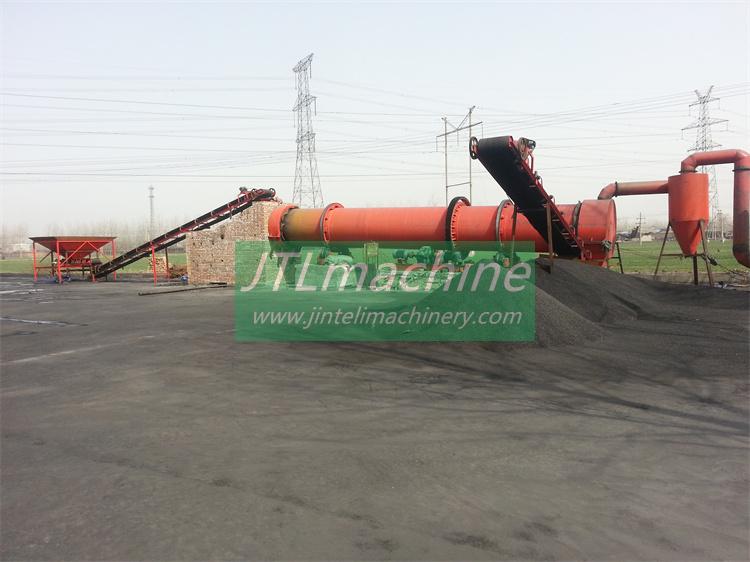Table of Contents
Maximizing Efficiency with Free Standing Rotary Drying Machines
Maximizing efficiency in industrial processes is a critical aspect of ensuring profitability and sustainability. One area where efficiency can be significantly improved is in the drying process, particularly when using free standing rotary drying machines. These machines, also known as rotary drying equipment, are renowned for their high efficiency, versatility, and robustness, making them an ideal choice for a wide range of industrial applications.
Free standing rotary drying machines operate on a simple yet effective principle. The material to be dried is fed into a rotating drum, which is heated either directly or indirectly. As the drum rotates, the material is lifted up by internal flights or lifters, which then drop the material back down, increasing the contact between the material and the hot gas. This continuous lifting and dropping action, combined with the heat, effectively dries the material.
One of the key advantages of free standing rotary drying machines is their versatility. They can handle a wide range of materials, from fine powders to large particulates, and can be used in various industries, including mining, agriculture, and waste management. This versatility is further enhanced by the ability to control the drying process by adjusting the drum’s rotation speed, the temperature of the heating medium, and the residence time of the material in the drum.
Another significant benefit of rotary drying equipment is its high thermal efficiency. The rotating drum design allows for excellent heat transfer between the heating medium and the material, resulting in faster drying times. Moreover, these machines are capable of recovering heat from the exhaust gas, further improving their overall thermal efficiency. This high efficiency not only reduces energy consumption but also lowers operating costs, making rotary drying machines a cost-effective solution for industrial drying processes.
Despite their many advantages, maximizing the efficiency of free standing rotary drying machines requires careful operation and maintenance. Regular inspection and cleaning of the drum and lifters are essential to prevent material buildup, which can reduce the machine’s efficiency and potentially cause damage. Additionally, the heating medium should be monitored and controlled to maintain the optimal drying temperature. Overheating can cause the material to burn or degrade, while insufficient heating can result in incomplete drying.

Furthermore, the feed rate of the material into the drum should be carefully controlled. Overloading the drum can lead to inefficient drying and potential damage to the machine. On the other hand, underloading can result in wasted energy and lower productivity. Therefore, finding the right balance is crucial to achieving maximum efficiency.
In conclusion, free standing rotary drying machines offer a highly efficient and versatile solution for industrial drying processes. Their ability to handle a wide range of materials, combined with their high thermal efficiency, makes them an ideal choice for many industries. However, to fully realize their potential, these machines must be operated and maintained properly. By doing so, businesses can significantly improve their drying processes, reduce energy consumption, and ultimately, increase their bottom line.
Understanding the Functionality of Rotary Drying Equipment
Rotary drying equipment, also known as a free-standing rotary drying machine, is a crucial component in various industrial processes. This machine is designed to reduce the moisture content in materials, making it an essential tool in sectors such as mining, agriculture, and chemical processing. Understanding the functionality of this equipment can provide valuable insights into its role in these industries and its contribution to efficient production processes.
The rotary drying machine operates on a simple yet effective principle. It involves the use of a rotating drum, which is heated from the inside to dry the material. The drum’s rotation ensures that the material is evenly exposed to the heat, promoting uniform drying. This rotating drum is typically inclined slightly to allow the material to move from the higher end to the lower end under the influence of gravity.
The process begins with the introduction of wet material into the higher end of the drum. As the drum rotates, the material is lifted up by a series of internal fins lining the inner wall of the drum. When the material gets high enough to roll back off the fins, it falls back down to the bottom of the drum, passing through the hot gas stream as it falls. This action allows the material to be effectively dried as it is tumbled through the drum.
One of the key advantages of a free-standing rotary drying machine is its versatility. It can handle a wide range of materials, from granular, powdery, and crystalline solids to sludges and solutions. This makes it a valuable asset in various industries. For instance, in the mining sector, it is used to dry out materials like limestone, clay, and sand. In the agricultural sector, it is used to dry out crops like corn and wheat before they are stored or processed further.
Another significant advantage of rotary drying equipment is its efficiency. The machine’s design allows for high heat transfer rates, which means it can dry large volumes of material quickly. This is particularly beneficial in industries where time is a critical factor. Moreover, the machine’s robust construction ensures it can withstand the rigors of continuous operation, making it a reliable choice for industrial applications.
However, the operation of a rotary drying machine is not without its challenges. The machine’s efficiency can be affected by several factors, including the moisture content of the material, the drum’s rotation speed, and the temperature of the heating medium. Therefore, it is crucial to monitor these parameters to ensure optimal performance.
In conclusion, a free-standing rotary drying machine is a versatile and efficient piece of equipment that plays a vital role in various industrial processes. Its ability to handle a wide range of materials and its high heat transfer rates make it an invaluable tool in sectors such as mining, agriculture, and chemical processing. However, to ensure its optimal performance, it is essential to monitor and control the operating conditions closely. Understanding the functionality of this equipment is the first step towards leveraging its capabilities to enhance production processes.





